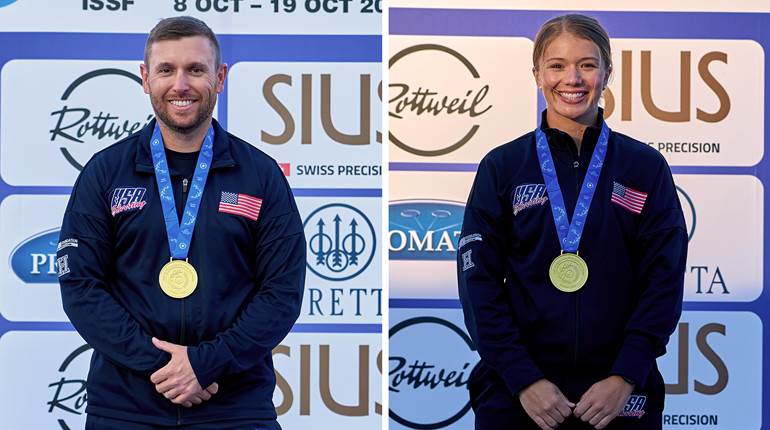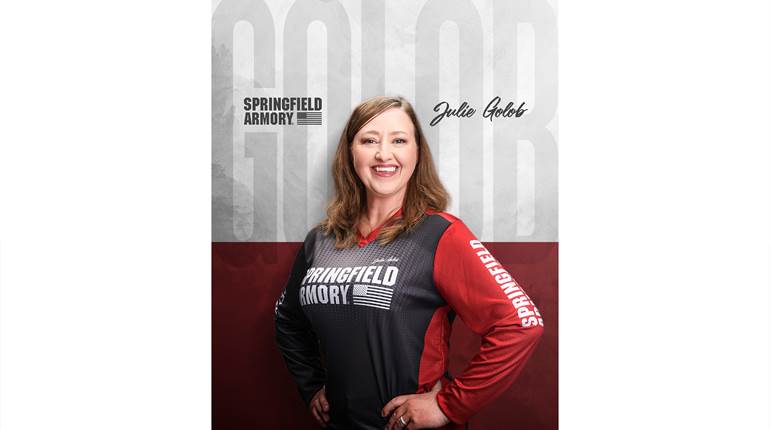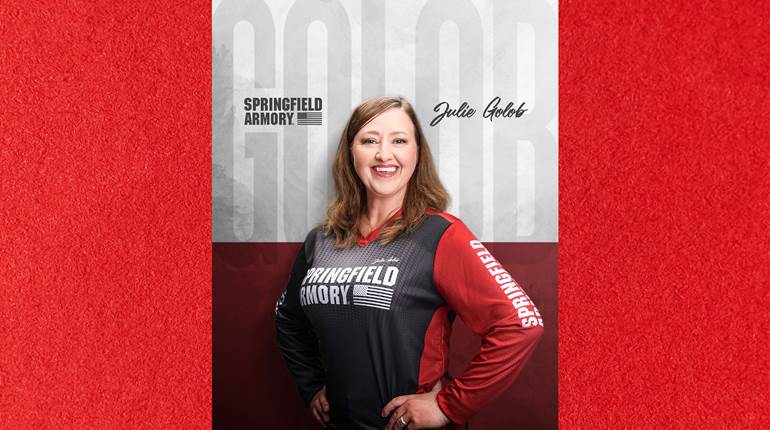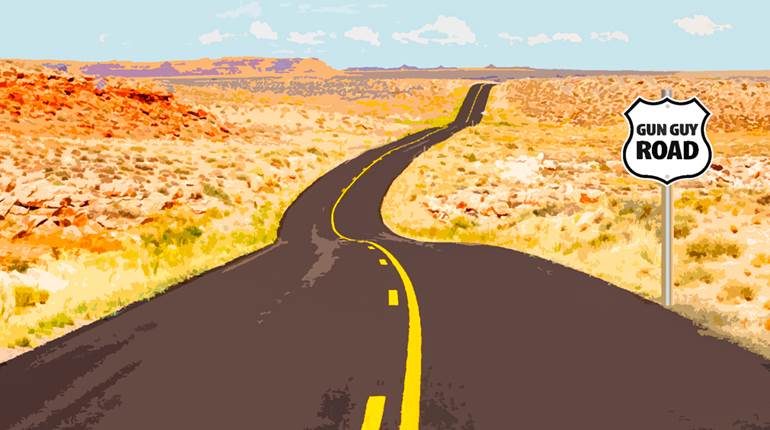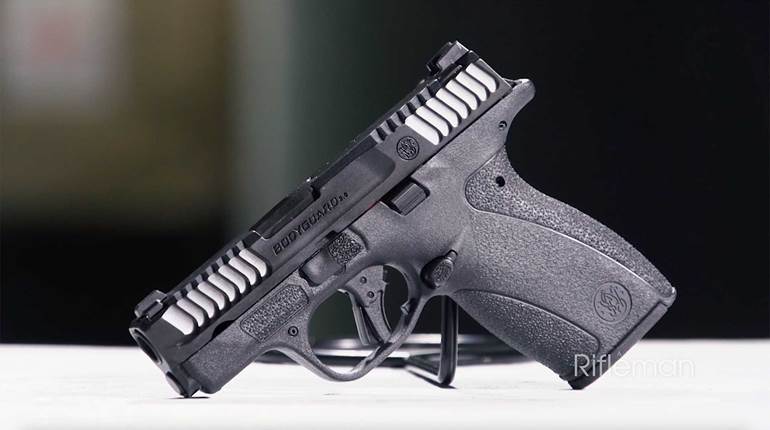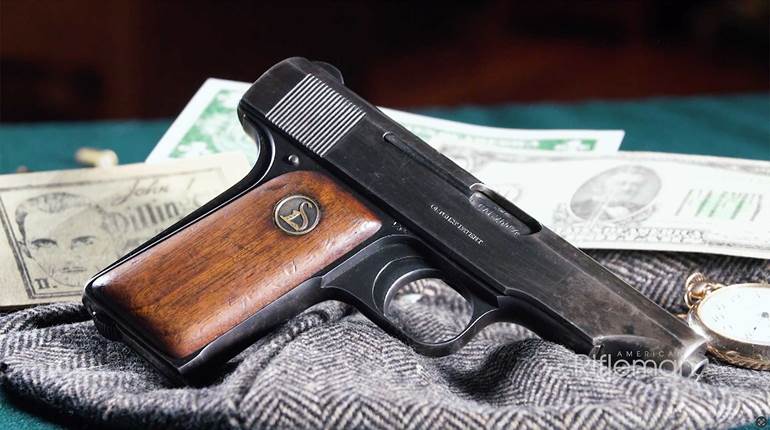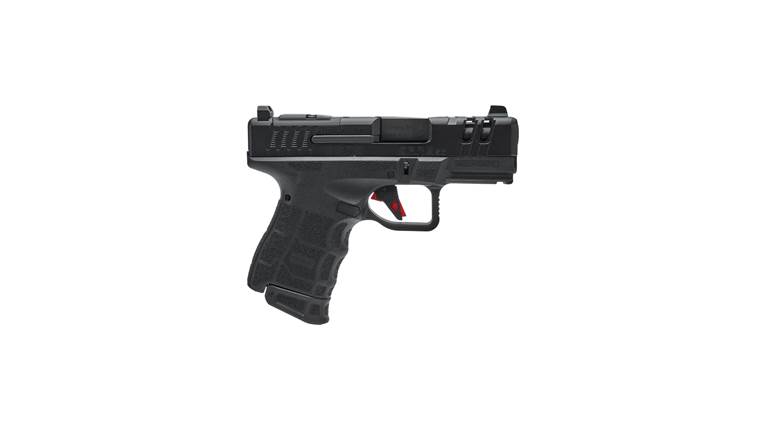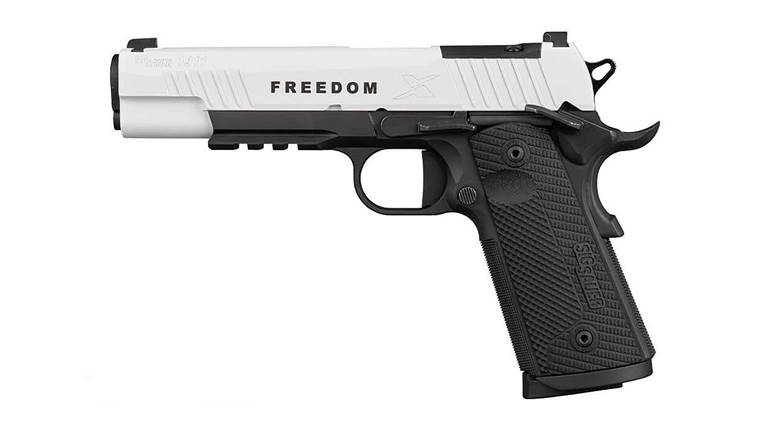
The first gun I ever shot was a .22 rifle, by far the simplest and easiest gun I've ever shot. The second time I went to the range some buddies had me shoot a 20-gauge slug gun in preparation for an upcoming hunt and they didn't try to warn me about the huge difference in blast and recoil. I shot it and was shocked at the difference. The recoil and my poor grip had the scope hitting my face, I started to flinch before I even pulled the trigger and made other mistakes, but these were all crucial lessons that I'm thankful for.
I'm not saying that you shouldn't warn new shooters of the power of a gun before they shoot it, but maybe take a different approach. Rather than say it's probably too much to handle, show them a good grip or stance that may give them better control. I am glad that I started with some of the more tame firearms to ease me in, but now that I'm here, let's do this!
In an effort to determine if I was alone in this line of thinking, I decided to ask some ladies who know a lot more about shooting than I what they have experienced.
What was the first gun you ever shot and how did you feel about shooting it?
Julianna Crowder, Founder of A Girl & a Gun Women's Shooting League and NRA Certified Instructor: The first gun I shot was my dad’s revolver named Betsy. I was a little girl and I thought it was really cool to shoot my daddy’s gun. We spent a lot of time in the California dessert camping and that revolver was always with us. I have a sentimental attachment to that gun, just because it was his and I knew he carried it to protect us.
Julie Golob, World Shooting Champion: The first gun I remember shooting was the classic 1911. It was chambered in .45 but my father had reloaded rounds that were very soft to shoot. I was 14 and very excited because I was going to start competing in practical shooting competitions.
Ann Smith, NRA Publications E-Media Editor in Chief: The first gun I fired was a Colt Python in .357 Mag., when I was about 18 years old. I helped to buy it as a birthday present for my boyfriend (now my husband). Having contributed to its purchase, I felt a sense of partial ownership, so I was actually excited to shoot it. And since I had no previous shooting experience, I had nothing to compare it to. I remember it kicked tremendously, but I was far too concerned with impressing my boyfriend to even think about complaining. Frankly, after shooting so many different handguns since then-ones that were much less punishing-I am not sure I even want to fire that gun today, though it’s in our permanent collection about 30 years later.
Il Ling New, Gunsite Instructor: I actually can’t remember the first gun I shot, though it was probably a pellet gun (rifle) my dad set up for me-in his living room! Talk about “bachelor pad”! I remember loving that and not wanting to relinquish the living room, which was off limits whilst being used as my “range”. I got my first shotgun, a 20 gauge, when I was ten and my first rifle (.30-06) at twelve.
Barbara Baird, Publisher and Editor of the Women’s Outdoor News: I shot my
husband’s Smith & Wesson Model 19 in .357 Magnum. Yes, that was the first gun I ever shot and I loved it! That was while we were dating.
Kim Rhode, Olympic Medalist: Probably, like everyone, the very first gun I shot was a BB gun. But both my parents shot with Beretta Autos for both hunting and clay targets. I remember my dad allowing me to shoot when we were in Yuma, Arizona, dove hunting. As a little kid it was really exciting.
I asked the women what was the most powerful gun they’d shot and how they reacted to it. From a .50 cal. Rifle and a .44 magnum to a .505 Gibbs, .454 Casull, side-by-side 375 Searcy Magnum and lightweight Smith & Wesson J-frames with hot .357 magnum loads, these ladies have tried it all. The overwhelming opinion on shooting larger caliber guns was that due to their experience and level of proper training, shooting the heavy load or recoil firearms was “no biggy.” A common emphasized point was the importance of the fit of the gun.
“I have shot plenty of powerful guns from obnoxious handguns to .50 cal. rifles, but I
would say the shotgun took me the most time to get comfortable with and learn to enjoy,” said Crowder. “The first time with a shotgun my husband gave me a 20 gauge and I didn’t have the gun placed correctly in my shoulder. I had plenty of advice on how to mount the gun but was still black and blue. I actually cried about an hour into it and had to leave the ‘family shoot’ because I was so embarrassed that I hurt so badly. After that it became a mission to find the right shotgun for me and to learn how to mount the gun so I didn’t hurt.”
I asked the trainers in the group if they thought that a woman could shoot any gun that a man can, and the response was overwhelmingly positive. They agreed that it is possible, but it depends more on the fit of the gun and the physical strength of the woman. “From a benchrest-absolutely! The average gal is pretty strong, but it all comes down to her physicality,” said Crowder. “I’m a strong woman but I tell ya, right now I wouldn’t want to run-n-gun with a .308 in a 3 Gun match because my arm strength isn’t there. But there are gals out there doing it because they have made endurance/strength training part of their routine in match preparation.” Julie Golob was in agreement, “Pretty much. There are some firearms that don't fit women very well, especially women of smaller stature, but there are usually ways to adjust how to hold the gun. Where it gets extremely challenging is when a person (man or woman) cannot support the firearm in a shooting position, cannot see the sights or physically cannot reach the trigger and hold the gun properly and safely. Those are rare cases though.”
Each woman I interviewed has been in the outdoor industry for years and has been  shooting for many years, which may contribute to the reason why none of them have experienced anything similar to what I have when it comes to being coddled. Then again, it would be unusual for someone to approach Julie Golob or Kim Rhode and ask, “Do you want me to load that for you?” The overwhelming response I received was that their experiences with others when shooting had been positive and that no one had ever tried to hold them back or baby them.
shooting for many years, which may contribute to the reason why none of them have experienced anything similar to what I have when it comes to being coddled. Then again, it would be unusual for someone to approach Julie Golob or Kim Rhode and ask, “Do you want me to load that for you?” The overwhelming response I received was that their experiences with others when shooting had been positive and that no one had ever tried to hold them back or baby them.
More often than not the scenario experienced most often by these women was that of a well-meaning gentleman at the range who offered unsolicited tips or attempted to test us “little ladies.”
“Once, at a public range, I was zeroing my .375 H&H, which really isn’t all that ‘big,’ but isn’t exactly common at this range. I usually carry my cartridges in a belt slide so I can practice with them in position, as they will be in the field,” said New. “A kindly older fellow-one of those who hangs around the range a lot because he’s retired and widowed-caught sight of the long rounds and blurted out, ‘Golly, what are you gonna shoot with those?’ I wanted to say, ‘Anything I darned well please!’ but was polite and explained my upcoming hunt-after all, he didn’t mean any harm.” The older gentleman continued to hang around and even offered New his homemade recoil pad made out of a hand towel.
“I have been interrupted while shooting at a range by a guy who had a semi-auto in .45 that he thought the ‘little lady should try.’ I think it was a Taurus 1911 ACP,” said Baird. “He thought he was pretty cute, and obviously, since he was the age of my dad and I’m a grandma, he was being a bit of a banty rooster. I played his little game, and asked if the safety was on. He swaggered a bit, proudly saying, ‘Why no, Little Lady.’ And then, I unloaded it downrange as I shot a super tight group at 15 yards. Actually, I kind of surprised myself. He took his gun and walked away saying, ‘OK. I wouldn’t mess with that lady.’ I only tell you this story because had I not learned the fundamentals of shooting – thanks to an NRA First Steps and then Basic Pistol class – I wouldn’t have had the solid grounding to shoot any handgun I pick up.”
As for whether a novice’s first time on the range should include a .22, most of the women  agreed that was the best option. “I think the best gun for a novice's first time at the range is a .22 cal. handgun or rifle,” said Golob. “With less noise and recoil compared to centerfire firearms, a new shooter is less likely to become startled. Not only are .22’s fun to shoot, but starting a new shooter with this caliber allows them to work on their basic fundamentals without the distraction of significant recoil.” Others leaned more towards the 9 mm. “While a .22-caliber handgun will provide minimal recoil for a first-time shooter, I don’t necessarily think all women have to go the .22 route for their initial range outing,” said Smith. “There have been so many engineering advancements in handguns in the past 10 years that a women can take a striker-fired 9 mm semi-automatic like the Smith & Wesson M&P and feel totally comfortable-and be a crack shot-very early in the learning process. Other good choices are a Springfield XD in 9 mm and the new Remington R51, which has a slide that is incredibly easy to manipulate.”
agreed that was the best option. “I think the best gun for a novice's first time at the range is a .22 cal. handgun or rifle,” said Golob. “With less noise and recoil compared to centerfire firearms, a new shooter is less likely to become startled. Not only are .22’s fun to shoot, but starting a new shooter with this caliber allows them to work on their basic fundamentals without the distraction of significant recoil.” Others leaned more towards the 9 mm. “While a .22-caliber handgun will provide minimal recoil for a first-time shooter, I don’t necessarily think all women have to go the .22 route for their initial range outing,” said Smith. “There have been so many engineering advancements in handguns in the past 10 years that a women can take a striker-fired 9 mm semi-automatic like the Smith & Wesson M&P and feel totally comfortable-and be a crack shot-very early in the learning process. Other good choices are a Springfield XD in 9 mm and the new Remington R51, which has a slide that is incredibly easy to manipulate.”
Il Ling New made it very clear that it really just depends on the individual. “Depends on the novice-with proper technique, a .308, 12 gauge, 9 mm or a .45 ACP are no problem,” said New. “I like to start beginners with something more than the minimums usually recommended because most can be managed handily, with the right coaching, but also because this helps to instantly dispel the myths and bias that have been fed to them. Many novice shooters are disadvantaged by the ‘advice’ they’re given before they shoot-some of it even innocent: ‘Oh, watch that recoil.’ ‘I remember my first shot-knocked me on my butt!’ ‘I wouldn’t shoot (fill in the blank) if I were you. Why don’t you start with something easier,’ etc. These comments do not help the beginner feel confident and eager!”
What advice would you give to female shooters that want to try shooting something with more power?
Crowder: More power to you sister! You can’t be scared of the gun #1, and I would assume that any gal that is looking to shoot a more powerful gun is well over that hurdle. The next thing to consider is you may be brave enough to handle the gun, but are you strong enough to control it. The first priority is always safety, and two of the rules we live by is it must be safe to operate and you must be capable of operating the gun. Upper body and hand strength is a must for controlling the gun, or at some point you just become unsafe. Worse case you end up being the girl they make fun of on Youtube, and nobody wants that.
Golob: My advice for women who want to try powerful firearms is to find someone with  experience to show you the best way to hold the gun. A proper strong grip combined with an aggressive stance of leaning into the gun will help you control recoil. Dry fire the firearm without any ammunition first to get used to the trigger length and weight. When you are ready to shoot, load only one round into the chamber for your first shot just in case you become startled. You can always load more afterwards.
experience to show you the best way to hold the gun. A proper strong grip combined with an aggressive stance of leaning into the gun will help you control recoil. Dry fire the firearm without any ammunition first to get used to the trigger length and weight. When you are ready to shoot, load only one round into the chamber for your first shot just in case you become startled. You can always load more afterwards.
Smith: First, be comfortable manipulating all types of handguns before going for more kick. Get practiced in lesser calibers first so you know what you are graduating to in a larger caliber. Make sure you can manipulate the slide if it’s a semi-auto. Sometimes larger calibers means a larger frame overall, so be sure you are able to get a proper grip and can hold steady on target before going big just for the sake of going big. When you are truly ready it will show in your attitude and aptitude on the range, and the person discouraging you from trying to shoot it will realize you actually are well prepared.
New: Go for it! Make sure you execute good technique-body weight forward, firm hold/mount of the firearm, etc.
Baird: Put all your fundamentals to work. Dry fire it first. If you breathe and also, talk to yourself through the shot – “front sight, front sight, front sight” – you probably won’t even realize when the shot takes place. It might surprise you a bit, but it should be downrange and near, if not on, the target.
Rhode: It’s fun to try other guns, but it’s not how big and loud the gun is or how fast it shoots, what really matters is that you hit what you shoot at. You will find shooting hot  ammunition, loud guns with heavy recoil will cause you to acquire bad habits of flinching, shutting your eyes when you pull the trigger, jerking the trigger or even not being able to pull the trigger in anticipation of the pain and noise. You want to do everything you can to eliminate all of the above so that it is an enjoyable experience with you able to see the target, pull the trigger and hit what you’re shooting at. But if you’re comfortable with it, go for it!
ammunition, loud guns with heavy recoil will cause you to acquire bad habits of flinching, shutting your eyes when you pull the trigger, jerking the trigger or even not being able to pull the trigger in anticipation of the pain and noise. You want to do everything you can to eliminate all of the above so that it is an enjoyable experience with you able to see the target, pull the trigger and hit what you’re shooting at. But if you’re comfortable with it, go for it!
Photo 1: Julianna Crowder at the Austin Rifle Club.
Photo 2: Barbara Baird shooting a Desert Eagle.
Photo 3: Kim Rhode shooting clays.
Photo 4: Ann Smith shooting an LMT AR.
Photo 5: Il Ling New on a Mozambique hunting expedition in 2009.
Photo 6: Julie Golob shooting a Smith & Wesson Model 625 at the USPSA Revolver National Championships with .45 ACP full-power loads. Photo courtesy of Paul Hyland.
Photo 7: The author with her favorite CVA Optima V2 muzzleloading pistol.















